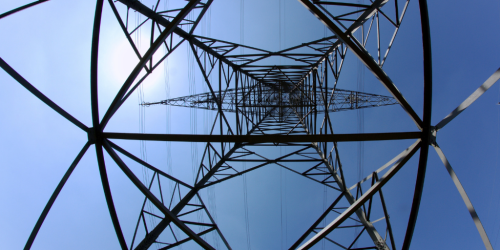Book traversal links for Network Design at Mountains
When it comes to designing their network, the key is in data quality, and the importance of having a complete overview of the network at hand is as high as the mountains around.
“There is a lot of complexity in network design and in how to present large amounts of data to the user in a way that supports their decision-making. It’s a good challenge,” reflects Jan Rondeel, the CIO of Lede AS (formerly Skagerak Nett) which is a part of Skagerak Energi in Norway.
Lede has about 17 000 kilometers of electricity network with over 195 000 consumption points, covering an area where over 400 000 people live. The environment is unique, yet challenging, with the power lines up and down the mountains along the Norwegian coast. “We have both coastal areas with lots of summer cabins, so they are quite difficult areas to access, and then we have rural areas with various cities, where most of the population lives. So we have a good combination of sea and mountains,” Jan Rondeel describes. And for sure, where the scenery is phenomenal, the environment also sets its own challenges to the electricity network operation. “In the city areas, we have cabled most of our grid, and we have a 70% cabling percentage in total, but in parts where there are quite long distances between the consumers, we still have a lot of power lines that go through forests. There, despite the snowstorms, it’s not economical to build underground cables, and we’re looking into how to get an even better overview of the forestation and the challenges it gives for those grid areas.”
In their network planning process, Lede uses a combination of Trimble’s solutions and other IT systems. Rondeel explains: “For example, we have some modules delivered by a scientific organization in Norway, and that’s one of the areas where we can do more in the future, that is, integrating the different data sources that go into the planning process.”
“Having good computational force in the Trimble system is very important, being able to do electro-technical calculations on the level in the grid that you need, and getting a very good overview of the information,” Rondeel continues. “In addition, it’s highly important to be able to trust the results that you get out of the system, and there we see that the Trimble way of coding and delivering gives us a high-quality solution, so you don’t sit down and re-calculate because you don’t trust the results you get.”
Watch the video on Youtube: Quality Data for Network Design at Lede
One of the latest improvement projects that Lede has collaborated with Trimble is the AMR rollouts. “By getting more sensor data in, we can also do more detailed planning, not based solely on computational models but more on real data, and making our planning process more accurate. This year is going to be the first year when we have a real volume of that data,” says Jan Rondeel, and adds: “We see that with Trimble, many of the capabilities that we need in the future are often readily available. So, for example, with the DMS AMR module we were able to just to go out, procure it and start testing, and now we’re going into production, so that’s a very good advantage for us.”
Jan Rondeel emphasizes the importance of high-quality network design having a complete overview of the condition and the history of the current network. “We have a good collection of that throughout the modules in Trimble’s solutions. All the maintenance data, an overview of the outages that have been in the area, and so on. We do all our detailed planning in the construction module, which also gives us a good overview of the cost of the project. And, thanks to having a detailed overview of all the materials needed, we’re easily able to either perform the work ourselves or make a work package which can be performed by an outside contractor,” Rondeel explains.
What’s more is the ability to always see which is the live version of the network and which is the planned version. For example, it’s easy to see what the network design will be like in a few months time. This is particularly important when planning for the next upcoming project, since the need for a good overall understanding of your situation is a must-have starting point for any good network design.



